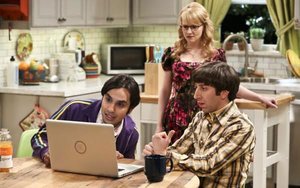Commentary
Searching For Something To Watch? It Takes Longer These Days
- by Adam Buckman , Featured Columnist, November 4, 2016

A new study of TV viewing habits finds that the process of searching for and finding something to watch on TV (or some other video platform) is taking more and more of a typical viewer's time.
But the study also finds that this isn't frustrating to most people, particularly if the end result is that they find something they are happy with watching (and in the case of VOD, or more specifically SVOD, paying for it too).
The study is titled “TV and Media 2016” and it is subtitled “The Evolving Role of TV and Media in Consumers’ Everyday Lives.” It's from Ericsson ConsumerLab and it can be accessed here.
advertisement
advertisement
The study covers a number of areas you have come to expect from such research. Section titles include “Changing Media Landscape,” “Development of User Generated Content,” “New Media Habits for TV User Groups” and others.
They are all interesting and worth a look, but the one I really found fascinating was the one titled “The Evolution of Content Discovery.” This section reports on the search habits of TV viewers and the time they spend grazing, browsing menus of content offerings and even consulting listings.
Forty-four percent of U.S. broadcast TV viewers say “they cannot find anything to watch on TV at least once every day.” The report says this situation is worse than last year's study. It “demonstrates that content discovery continues to be an unresolved issue for consumers,” the report says.
The average viewer in the U.S. spends 23 minutes every day looking for something to watch on broadcast TV. The report then says this amounts to 1.3 years of an average person's total lifetime. Is it time well-spent? We can all be the judge of that where our own lives are concerned.
Only 34% of VOD viewers “say they cannot find anything to watch,” the report says. The report notes that the time required to sift through the offerings on streaming services such as Netflix, Amazon Prime or Hulu is 45% greater than the time spent grazing through the broadcast and cable channels. And yet, the study says, “63% are satisfied with the content discovery in their VOD service, while only 51% of consumers say the same for their scheduled linear TV service.”
Why focus on this one area in this blog post? Because the subject of TV viewing habits and consumption -- particularly when they present yet another example of the generational divide in TV-viewing behavior -- has long fascinated me.
It's not something that gets written about that much in all the commentary that gets produced about new media vs. legacy media. But I have long observed -- and wondered about -- the willingness on the part of video consumers (of all ages, actually, even if we associate such behaviors more readily with younger people) to spend so much time looking for, and then paying for, TV shows to watch.
Here's a radical thing to say: I have spent my entire life watching TV, probably more than most people because it's been a part of my working life as well as my personal life for about three decades. But with a very tiny handful of exceptions, and although I happen to like television very much (generally speaking), I have never considered any TV show really worth paying for or DVR’ing. I have always considered TV shows to be expendable things. Miss one and you can catch another -- the old “streetcar” analogy, right?
And yet, in the current era, you never seem to come across anyone who feels the same way. Instead, people today are so eager to be up to speed on the TV shows everyone is talking about that they will expend considerable effort to watch them. Everyone says the current TV era is better because the way everything is set up today allows one to watch anything on his or her own schedule, anywhere they want (for the most part).
And I suppose all of that is true. But in a simpler era, when you had none of this flexibility, you never felt that you had to “work” to watch TV. You just turned it on with the same effort you would expend to switch on a light. It was that easy. Indeed, the old broadcasters used to say that they considered the TV and radio stations they operated as “utilities” in this way -- always there, and always available at the press of a button or the turning of a switch, like electricity or drinking water.
Now it's more complicated, but the tradeoff is more to watch. And if that’s important to you, then by all means, have at it.



